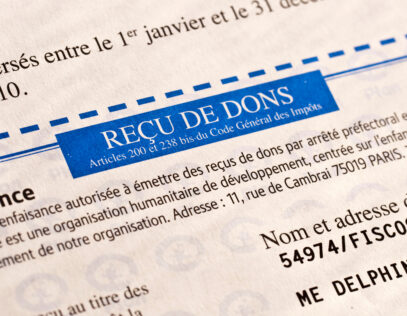You’ve made a consequential business decision, after looking at it from every strategic angle, including tax planning. As part of a big cross-border transaction, you’re reorganizing—moving functions, assets, and risks to diverse jurisdictions.
But there’s a problem: The transfer pricing data connected to the new legal entities is sparse, putting you at an immediate disadvantage once tax authorities enter the picture: There’s a presumption that the taxpayer is hiding something. Let the audit worries begin.
Of course, it’s not only structural changes that face this kind of scrutiny (and require this kind of diligence). Any and all intercompany transactions where a profit-based transfer pricing method such as TNMM is used—as is the case in roughly 80 percent of transfer pricing transactions—require careful choice of comparables and profit level indicators (PLIs).
In the eyes of tax authorities, an unreliable PLI can be the proverbial canary in a coal mine, leading to scrutiny and pushback on your choice of comparables and transfer pricing method.
And it won’t be if, in implementing your tax plan, you’ve ensured that both your transfer pricing method and supporting documentation match the facts and circumstances—on both an economic-substance level (functions are moved, assets are migrated) and an accounting level (accounts reflect changes to the true nature of the business). In terms of transfer pricing, this means choosing your comparables and PLIs carefully from the get-go, in every relevant jurisdiction.
The Right Profit Level Indicator
When it comes to selecting the PLIs that can best support your transfer pricing position, the comparisons can be tricky. So, here’s a three-word mantra to help you navigate that maze: Methodology. Stability. Reliability.
The key is to produce indicators that have both a solid theoretical foundation and solid metrics underpinning that methodology. You can’t go to your CFO with a range of results, after all, or with a target profit level indicator that could change in a year or two. You need stability. And that stability in turn rests on PLIs that can produce a reliable result over an extended period of time.
Both U.S. regulations and OECD guidelines lean heavily on this concept of reliability, as Dr. Ednaldo Silva—who helped write the IRS’s transfer pricing regulations—explained in our transfer pricing podcast on the subject of PLIs. That’s because, even if the taxpayer and the tax authority are using the very same indicator, they might have different ways of measuring it. And if each party has its own interpretation of the facts, that can impact the content of the benchmarks… and the transfer price itself.
Art and Science
So, what is it that makes PLIs problematic? Can’t you just calculate all the different indicators and pick the one with the smallest variance? If this were a matter of pure science, that would be the easy call.
Unfortunately, when it comes to reliability, transfer pricing—like, for instance, winemaking (another activity that requires careful blending of hard-to-pin-down elements)—is as much art as science. Any profit-based method starts with choosing the right parameters for your profit-level ratio. You can’t use gross profit for the numerator (or Y-axis): it has to be net operating profit—whether before or after depreciation. The denominator (or X-axis) can be one of three metrics:
- net sales or revenue
- costs
- assets
Now here’s the problem: While net sales or revenue are easy to pick up from a company’s income statement, costs and assets are unreliable from an accounting point of view. That’s because they are composite accounts. And that’s where things can get seriously tricky.
If Only Comparables were Apples-to-Apples…
Costs, of course, incorporate COGS—the kitchen sink where all manner of hard-to-compare items show up. It’s where you might find inventory purchases, direct labor, acquired intangibles, and other unstructured costs that require a schedule (one that varies from year to year, and company to company).
There’s the issue of operating expenses and depreciation–is it included or excluded? Not to mention “extraordinary items,” which sometimes show up on that operating-expenses line. This method requires a great deal of due diligence to ensure it conforms with GAAP or IFRS.
Still, that’s the easy part. When it comes to finding comparables, you have to repeat the diligence—except with one hand tied behind your back. You can’t peer inside the black box of another company’s COGS.
You can’t tell whether their operating expenses include depreciation, or monetization of acquired intangibles. It’s impossible to reverse-engineer those composites—and it doesn’t help that few of their accounting footnotes are typically disclosed.
Comparing composition of assets can be even trickier than composite costs. First of all, there’s the issue of age and depreciation of the asset. (Even two companies that acquired the same asset in the same year could elect different depreciation schedules, jettisoning any apples-to-apples comparison.)
Then there’s the fact that you would be lumping in both depreciable assets (e.g., property, plant, equipment)—some long-term, some less so—with non-depreciable ones (e.g., accounts receivable, inventories). All this makes for a pretty heterogenous soup.
Creating a Better (Safer) Range
Transfer pricing is not about hitting the arm’s-length bullseye (often, there is no such thing), but about being in a defensible range in the eyes of a tax authority. To that end, many companies hew to regulations or guidelines (be they from the U.S., the OECD, or a relevant jurisdiction), which typically allow for plenty of leeway.
In practice, taxpayers who elect to use the comparable profits method (CPM) or transactional net margin method (TNMM) avail themselves of the interquartile range (IQR) measure—where the profit margin, averaged out, lands within the middle 50% of results—to determine (or demonstrate) arm’s length.
There’s a tension and a risk at play here: Many will be tempted to go for as wide a range as possible, using the IQR. But experience shows that the real standard tax authorities expect you to follow is that of reliability. Silva points out that IRS regulations specify that a different statistical method can be used if it proves to be more reliable.
Many companies select profit indicators with a very wide range, or make adjustments (based, for instance, on asset intensity) to effectively enlarge the original range. That’s seductive—and dangerous.
Consider a taxpayer with $40 billion in revenue, and a range of results from 1% to 8% within a given year. It would be hard to argue that both are at arm’s length—and harder still to imagine that tax authorities would look kindly on such an argument. The more so if those adjustments have a significant impact on the center point.
Here’s a basic principle you can use: If you stabilize the center of a series of possible PLIs, the most reliable will be the one with the smallest radius around—or deviation from—the center of the range. The best ranges are stable: they endure.
Threading the Transfer Pricing Needle
When it comes to accounting for related-party transactions, life would be so much easier if there had been an underlying, clearly defined theory of profits in the regulations from the start. But there isn’t. That fundamental, architectural flaw is what created the transfer pricing industry. It’s why we’re here.
But it doesn’t have to be a fraught process, either. When a company executes a strategic plan to move functions, assets, and risks, they need to be sure to bake in transfer pricing best practices—including choosing comparables and profit-level indicators grounded in reliable metrics.
Threading the needle to satisfy both your CFO and tax authorities requires more than luck. It calls for careful planning, good data, and plenty of sophistication: as in so many other areas of life, a devilish mix of art and science.








